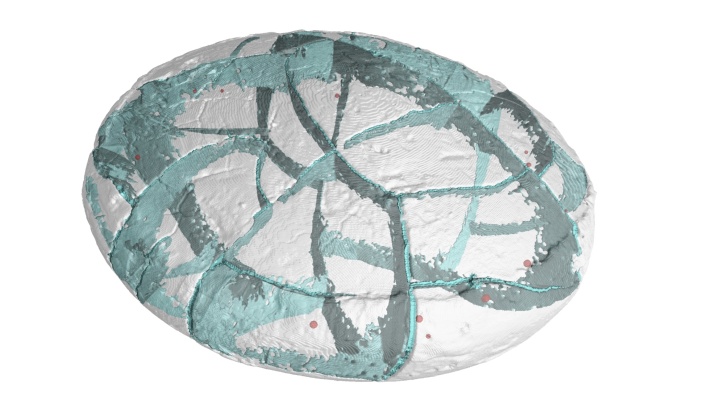There are over five billion plastic particles floating on the surface of our oceans – much to the detriment of the living organisms, the delicate underwater ecosystem, and even the climate. Until now, it was possible to determine how long it takes for the plastic to completely degrade only by extrapolating from laboratory data. But researchers at the University of Stuttgart have recently conducted a study on plastic pellets released in a shipwreck in the Red Sea. This has led to a better understanding of the aging of plastic. The results were reported in “Scientific Reports” on July 13, 2022.
It was a shipwreck for the benefit of science. In June 1993, the cargo ship SS Hamada sustained severe damage in heavy seas above a coral reef off the coast of Egypt, broke in two, and sank – fully loaded with plastic granules – in the middle of a nature reserve. But the disaster also offered an opportunity. Some of the plastic pellets washed up on the beach, while the rest remained in the flooded holds of the wreck until today. This provided the first opportunity for researchers to conduct comparative studies on the degradation of the plastic pellets under vastly different conditions.
It had previously been estimated that it would take anywhere between several centuries and several millennia for polyethylene – one of the most common plastics – to be completely degraded in the oceans. However, these figures are subject to considerable uncertainty because the extrapolations are based largely on laboratory tests. “Long-term studies on the degradation of plastic in the oceans have been lacking up to now because, among other things, it is not possible to determine the precise age of the plastic waste,” say Prof. Dr. Franz Brümmer and Uwe Schnepf from the Institute of Biomaterials and Biomolecular Systems (IBBS) at the University of Stuttgart. The two scientists lead a consortium that includes the Scientific Diving Group (WiTUS) and the Institute of Polymer Technology at the University of Stuttgart, the German Aerospace Center (DLR), and an Egyptian cooperation partner. In 2016, plastic pellets were initially collected from both the wreck (during scientific dives) and the beach. The consortium then examined these pellet samples using different methods.
Large differences in degradation
The microscopic, chemical, and mechanical tests quickly revealed major differences with regard to the degradation processes. “While the degradation of the plastic pellets on the beach is already in full swing, the plastic pellets trapped in the wreck at 18 m below water show hardly any signs of degradation,” say Brümmer and Schnepf. The results of the Stuttgart study thus contribute to a better understanding of the influence of various environmental factors such as UV radiation, high temperatures, and large temperature differences on the aging of plastic, thereby providing more accurate knowledge of the degradation of plastics in the ocean.
Expert Contact:
Prof. Dr. Franz Brümmer, Uwe Schnepf, University of Stuttgart, Institute of Biomaterials and Biomolecular Systems, Aquatic Biodiversity and Scientific Diving Research Unit, Tel +49 711 685 65083, E-Mail Prof. Franz Brümmer, E-Mail Uwe Schnepf
Brümmer, F., Schnepf, U., Resch, J., Jemmali, R., Abdi, R., Kamel, H. M., Bonten, C., & Müller, R.-W. (2022). In situ laboratory for plastic degradation in the Red Sea. Scientific Reports. https://doi.org/10.1038/s41598-022-15310-7 https://www.nature.com/articles/s41598-022-15310-7.pdf


